MOTORNET: Honda Reworks The Odyssey
Honda Reworks The Odyssey
SCOOP MOTORNET with Karl Ferguson
Images by Neil Mackenzie - http://www.onlinefotos.com/neil
It's difficult to get excited at the prospect of a new people-mover or MPV (Multi-Purpose Vehicle) as they are more commonly known. After all, the majority of MPV drivers find themselves in the category purely for the practicality offered by the vehicle - like carrying seven passengers - rather than for characteristics you or I might hold dear such as roadholding and handling, design and performance.
Having said that, most will agree the new Honda Odyssey provides an intriguing take on the traditional interpretation of the MPV launched all those years ago with the original Toyota Previa - at least in appearance. It would be fair to say its looks are somewhat polarising, modelled as they appear to be on a cut-down American street racer. Put it next to a first generation Previa for example, and the relative lowness of its roofline is readily apparent. The 'aggressiveness' of the design - at least in top spec VTiLS form - is accentuated by narrow headlights complemented by low-set fog lamps, body-coloured skirts and edgy five-spoke alloy wheels.
Somewhat oddly though, Honda is quite adamant that the Odyssey is in actuality a car. Huh? You might well express surprise at this claim for there is no doubt, with its long van-like lines and despite its different, yet distinctive shape, the Odyssey indeed fits the profile of an MPV. But it's not as clear a case of the 'emperor's new clothes' as you might think. Beneath the skin, the Odyssey shares many mechanicals and underpinnings with the Honda Accord Euro - of which I wrote breathlessly of its attributes some months ago - albeit with a less powerful (read: detuned) version of the Euro's brilliant 2.4 litre in-line four cylinder engine.
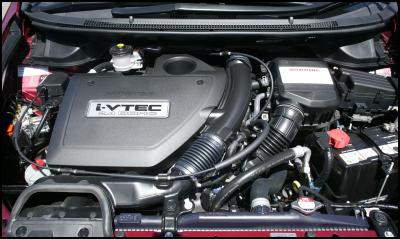
Click for big version
So while the Odyssey is no ball of fire, it puts its 118kW of power (developed at 5500rpm) and 218Nm of torque (developed at 4500 rpm) to good use. NZ Autocar recorded 0-100 km/h time for the Odyssey of 10.83 seconds - or quicker than many full-sized SUVs but a bit slower than the average sedan. Funnily enough, it feels quicker, at least in everyday driving conditions if not in a straight-line situation, where acceleration seems ponderous.
For that reason, and despite its size, punting the Honda through moderately challenging roads is not as much of a chore as you might expect. It handles pretty well, turning in reasonably crisply and holding the chosen line with a good degree of enthusiasm. The five-speed auto works well and is responsive when the accelerator is pushed hard and understeer is only apparent when the Odyssey is really pushed. It almost does feel like a car in many respects.
Except that the Odyssey has a definite Achilles heel in the form of its totally uncommunicative steering. I admit I had just stepped from the Subaru Legacy 3.0R which sports truly exceptional steering so it's possible I was somewhat biased, but woolly with a complete lack of feel at any speed would best describe my experience with the Odyssey's tiller.
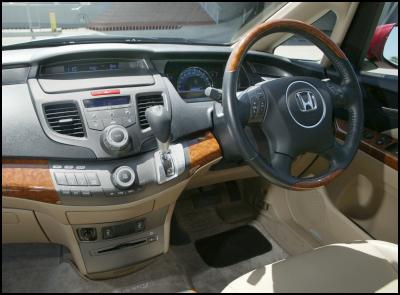
Click for big version
No complaints about the interior packaging of the Honda though, and considering many prospective buyers will base their purchasing decision on exactly these attributes, just lucky for the Odyssey. There's no denying the American theme of the vehicle continues in the interior with a slightly jarring combination of analogue dials and digital displays in lurid fluoro. Generally, the ergonomics are first rate and have all the usual Honda attributes like handy remote controls for the sound system on the steering wheel.
The driving position takes a bit of getting used to however. The driver sits a long way from the front of the vehicle and there is the impression of serious distance between the wheel and the rest of the dashboard. Like most things, you get used to it. Passengers fair pretty well though, notably because the lower centre of gravity means improved ride and handling, but they benefit too from comfortable seats and quite loads of space. Even the rear pew boasts two practical seats. Adults might bristle at the idea of a long trip, but for short to moderate distances, they are better than most SUV equivalents. Seats can be configured in multiple ways - which is probably expected - but ease of handling is worth noting. Even little ones shouldn't have any trouble moving seats around.
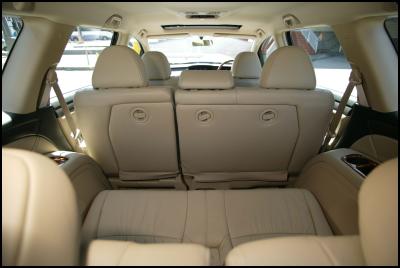
Click for big version
Standard levels of equipment are high and include climate control air conditioning (with rear outlets), single-disc CD player, trip computer, six airbags and electronic parking assist. And while the parking assistance is welcome, the Odyssey's system seemed a little on the hyperactive side providing high-pitched warnings in many unnecessary situations. The top-spec VTiLS adds additional electrics - including a fully-electric rear pew that folds to flat at the touch of a button - and plush leather upholstery. Incredibly, and in spite of the generous equipment, the mid-rear bench lacks a full lap-sash seatbelt for the middle passenger. How Honda can justify this as an acceptable commitment to safety in this day and age is simply astounding.
What will all this set you back? The base model VTi starts at a no-haggle price of $38,600 and tops out at a still reasonable $47,500 for the top spec VTiLS - and in my mind, pretty good value for money considering the sheet metal involved. The Odyssey represents a pretty convincing package in most departments, but whether it will be enough (even with the radical styling) to overcome the preconceptions people have about MPVs, the jury is still out. Given Honda's efforts to promote the car-like attributes of this new MPV, one wonders why on earth they didn't retain the extra power of the Euro power plant in an effort to put a bit more sting in Odyssey's tail.
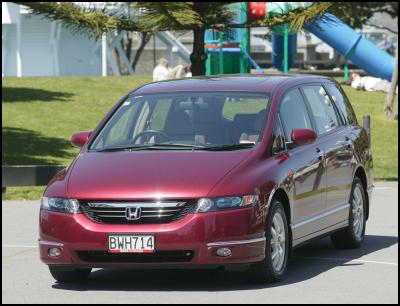
Click for big version
ENDS


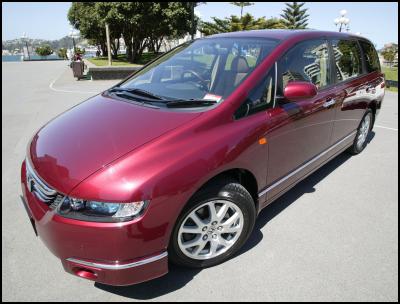
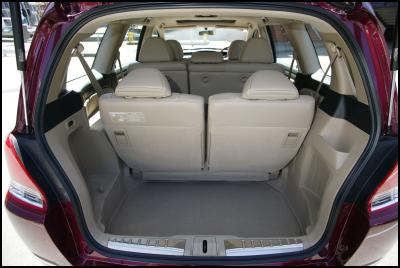
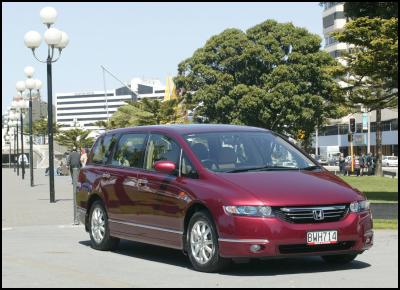
 Eugene Doyle: Writing In The Time Of Genocide
Eugene Doyle: Writing In The Time Of Genocide Gordon Campbell: On Wealth Taxes And Capital Flight
Gordon Campbell: On Wealth Taxes And Capital Flight Ian Powell: Why New Zealand Should Recognise Palestine
Ian Powell: Why New Zealand Should Recognise Palestine Binoy Kampmark: Squabbling Siblings - India, Pakistan And Operation Sindoor
Binoy Kampmark: Squabbling Siblings - India, Pakistan And Operation Sindoor Gordon Campbell: On Budget 2025
Gordon Campbell: On Budget 2025 Keith Rankin: Using Cuba 1962 To Explain Trump's Brinkmanship
Keith Rankin: Using Cuba 1962 To Explain Trump's Brinkmanship